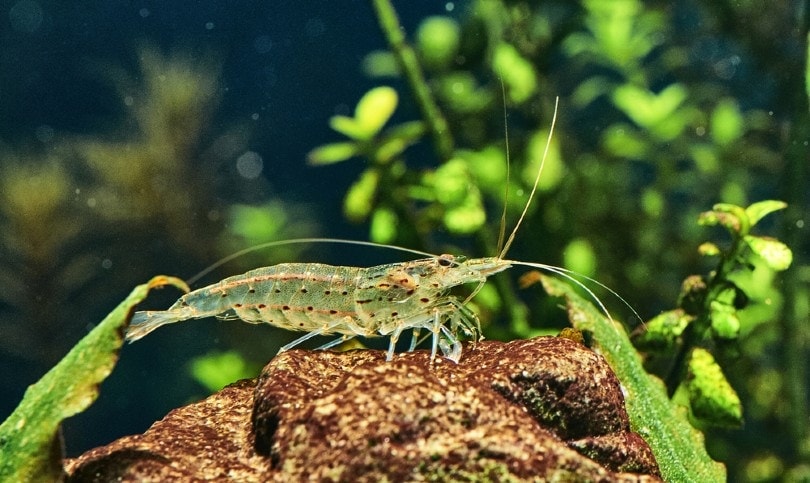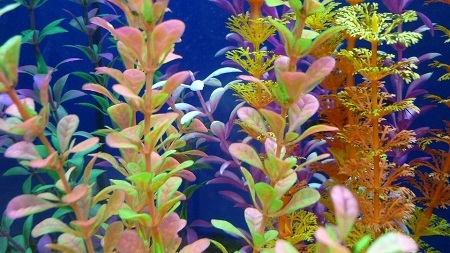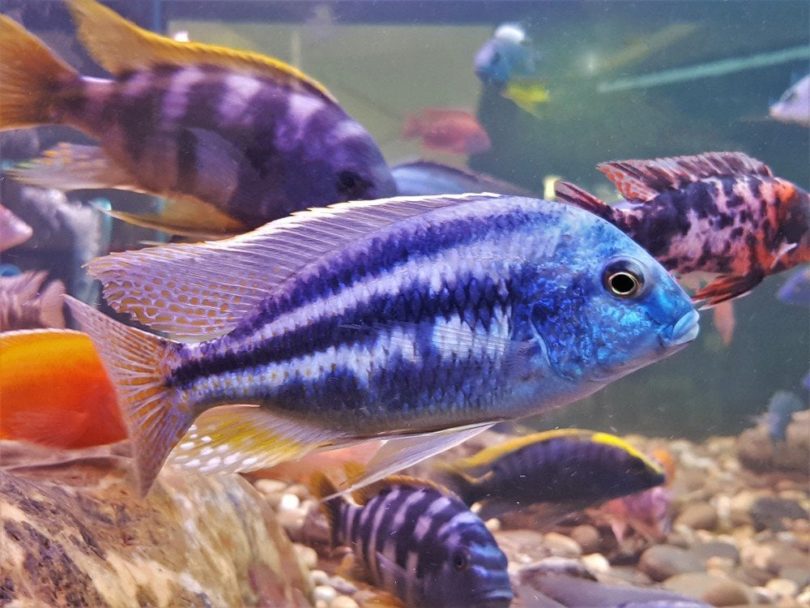Bleeding Heart Tetra: Pictures, Size, Care, Tank Setup, & More Vet-Reviewed Info

Updated on
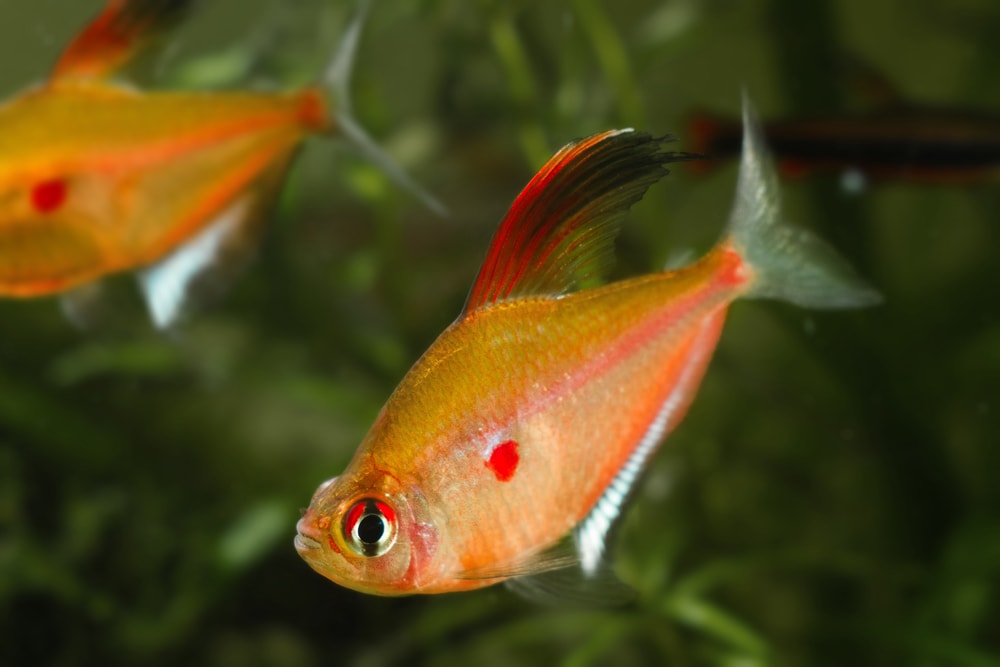
Click to Skip Ahead
Bleeding Heart Tetras (Hyphessobrycon erythrostigma) are freshwater fish that live in the upper Amazon River basin. They are named for the red spot near their gills, with the rest of their bodies usually being a white-silver color. They may also have a faint red stripe down the side of their body. They grow to around 2.5 inches (6.4 cm) in size, and they tend to do best when kept with other Bleeding Heart Tetras but they are considered a relatively beginner-friendly fish that is easy to keep.
Read on as we discuss this fish in further detail.
Quick Facts about Bleeding Heart Tetra
| Species Name: | Hyphessobrycon erythrostigma |
| Family: | Characidae |
| Care Level: | Beginner |
| Temperature: | 23–28 °C (73–82 °F) |
| Temperament: | Peaceful but may nip at fins if stressed |
| Color Form: | Silver with a red spot on the body |
| Lifespan: | 3–5 years |
| Size: | 2–3 inches |
| Diet: | Pellets, live food |
| Minimum Tank Size: | 20 gallons for 6 fish |
| Tank Set-Up: |
|
| Compatibility: |
|
Bleeding Heart Tetra Overview

The Bleeding Heart Tetra is a really good beginner fish because it is relatively easy to find, gets on well with a variety of tankmates, and is an attractive addition to an aquarium. Like all schooling fish, they do best in larger numbers, with most owners keeping at least six to eight. They tend to occupy the middle and lower parts of the aquarium water column.
The fish originates from the Amazon basin, where they live in fairly acidic, slow-moving water, surrounded by plants and fauna. As with many fish, the Bleeding Heart Tetra is most likely to thrive in a setup that closely replicates these features and provides the fish with something close to their natural habitat. This means it’s best if the water has a slightly acidic pH. However, consistency with pH is far more important than constantly trying to acidify your aquarium; if your water’s pH is within an acceptable range for the species, you shouldn’t obsessively try to adjust it as this may do more harm than good.
Other than this, the species is considered quite easy to care for. They can be kept with a variety of tankmates, and this also makes them a good choice for experienced aquarium keepers.
How Much Do Bleeding Heart Tetras Cost?
These inexpensive, pretty fish can cost anywhere from $5 to $20 each, and it is usually possible to buy several at a time and enjoy a discount. This schooling species prefers to be kept in schools of at least six fish, which will have a cost of around $20 to $80 depending on age, sex, and the actual number of fish you buy.
If you are setting up a new tank for the Tetras, the cost of the fish will likely be one of the smaller costs. The tank itself will be a big investment and even the cost of live plants can add up. As Bleeding Heart Tetras have simple dietary requirements, food shouldn’t prove too expensive, although it is an ongoing cost that you will need to meet each day.
Typical Behavior & Temperament
Bleeding Heart Tetras are generally peaceful fish that will get along with other fish in the tank and certainly with one another, although some males can be competitive. Because they are schooling fish, they should be kept in groups of at least 6. Fin nipping is a possibility if you keep them alone or in too small a school.
They are an active species, which means that they prefer longer tanks over taller ones, but their tendency to zip around the tank combined with their markings make them a pleasurable aquarium fish to watch.
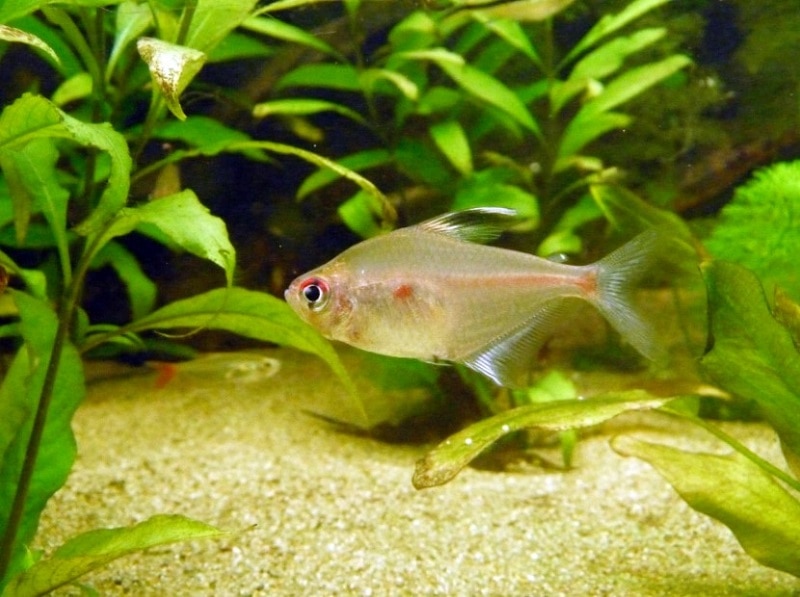
Appearance & Varieties
The Bleeding Heart Tetra is a relatively small fish, but definitely not the smallest fish out there. They can grow to 2–3 inches as an adult, with 2.5 inches (6.4 cm) being the standard average adult size. The Tetra has a diamond-shaped body, and their fin conformation varies depending on their sex. The fins are transparent, and the dorsal fin may have red and black coloring.
The body tends to be a white-silver color and the species gets their name from the blood-red spot that is in the middle of the body. It is close to where the fish’s heart is imagined to be, although in reality this mark doesn’t sit above their heart. The Bleeding Heart Tetra can have different colors and a different appearance according to their habitat and where they originated, however. The fish is widely regarded as being a beautiful example of a Tetra and their colors make them quite clearly visible in most tanks and setups.
The female is more full bodied and the male has a larger dorsal fin, and the male is distinguished by longer extended dorsal and anal fins.
How to Take Care of Bleeding Heart Tetra
The Bleeding Heart Tetra is said to be suitable for first-time and novice fish owners. However, you do need to provide a suitable setup so that your Tetras are comfortable and can thrive.
Tank Size
At an absolute minimum, you need a 20-gallon tank. This will be big enough to house six Bleeding Heart Tetras. If you want more than this, or if you will be housing your Tetras with other fish of other species, you will need more tank space. And the more space you can provide, the more room there will be for plants and other additions.
Water Quality & Conditions
The natural habitat of the Bleeding Heart Tetra includes slightly acidic water, but they can tolerate any stable pH value ranging from 5.5-7.5. The ideal temperature is 23–28 °C (73–82 °F), but again, a consistent temperature is key to ensure your pets’ health.

Substrate
Bleeding Heart Tetras are able to cope with just about any substrate, including smooth rocks, sand, or pebbles. It’s important to note that some substrates can alter your water’s pH; this should be kept in mind if you plan to house other fish in the aquarium alongside your Tetras.
Plants
These fish definitely benefit from the inclusion of live plants in their habitat. They will enjoy having some driftwood at the bottom, leafy plants in the foreground, and stem plants at the back of the tank. Floating plants provide some protection and shelter from light, which Bleeding Hearts will appreciate. However, live plants are sometimes not easy to care for, especially for someone who
Lighting
This species doesn’t have any specific lighting requirements. However, if you have live plants in your aquarium, you should cater the lighting to their needs.
Filtration
Bleeding Heart Tetras require adequate filtration in their aquarium. This makes it necessary to have a good quality filtration system to clear out the dirt, ammonia, and other harmful substances from the water and provide them with a stable, safe environment. This is especially important with the amount of live vegetation in the tank. The system should be capable of cycling the tank water several times an hour.
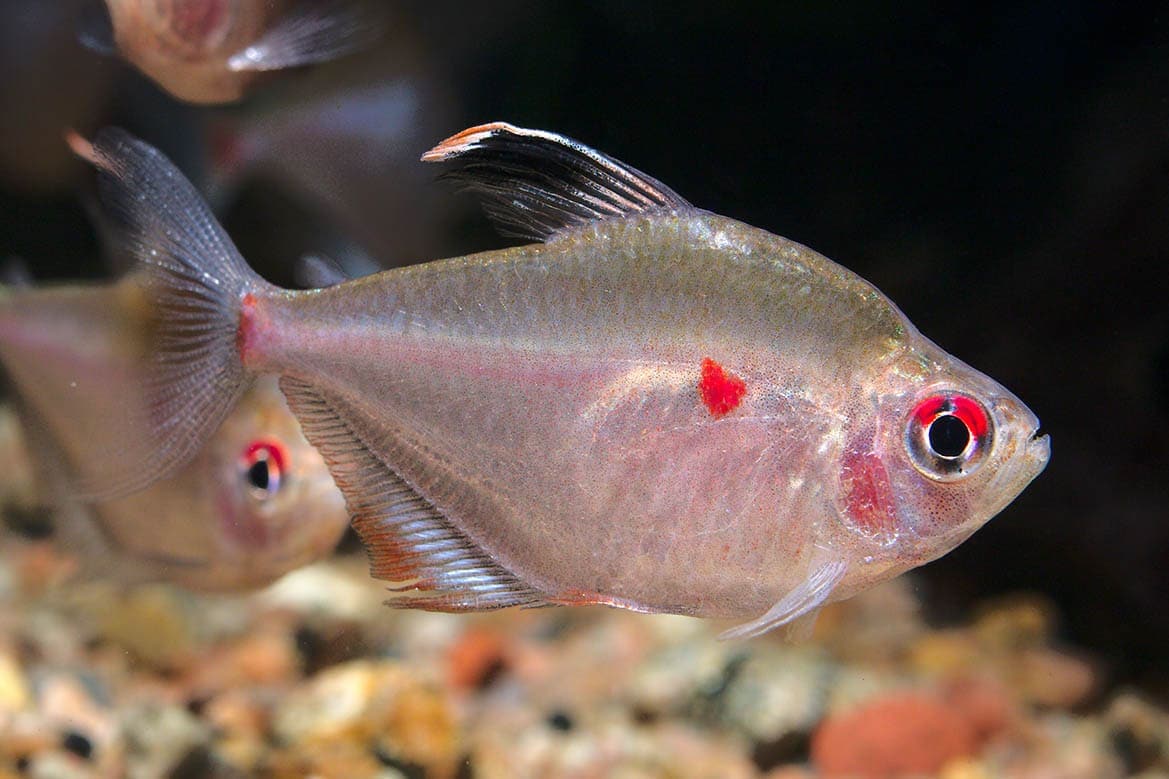
Are Bleeding Heart Tetras Good Tank Mates?
As schooling fish, Bleeding Heart Tetras do especially well in groups of six or more of their own kind. They also do very well as tank mates for other fish. In particular, they do well with similarly sized, placid fish, but you should avoid housing them with fish that have long and pretty fins. Some Tetras, especially those that do not have enough tank mates of the same species, can nip at fins.
Good examples of possible tank mates include other Tetra species as well as loaches and barbs. If you do want to keep multiple species, you will have to take into account their different requirements.
What to Feed Your Bleeding Heart Tetra
Capable of thriving on a relatively basic diet, Bleeding Heart Tetras can do well on a diet of good-quality flakes or pellets. You can also feed live or freeze-dried foods and they will readily take shrimp, bloodworms, and other snacks. Offering variety is good and the Tetras will appreciate the occasional plant-based food.

Keeping Your Bleeding Heart Tetra Healthy
This is a beginner-friendly fish species, which means that its care and health requirements are not too demanding. Ensure the water is the right acidity and temperature, and always make sure your Tetras have enough vegetation to hide under while offering decent-quality food and the occasional treat. Ensure the filtration system is operating efficiently to help avoid diseases that are common in all freshwater fish, including fin rot and fungal infections.
Breeding
Bleeding Heart Tetras have been successfully bred in captivity, however, they are considered very difficult to breed in captivity. It’s not recommended for beginners to attempt breeding these fish. If you are interested in breeding these fish, and have the resources to do so (including several other tanks for the babies), then it’s best to seek out a professional breeder or your aquatic veterinarian for more information about the breeding process.
Are Bleeding Heart Tetras Suitable for Your Aquarium?
Bleeding Heart Tetras are attractive fish that are beginner-friendly and considered good fish for those venturing into the hobby. They have a unique look that makes them easy to spot in the tank and they do benefit from having a lot of vegetation and slightly acidic water.
This schooling fish does well with other placid fish of the same size, but you will need to ensure that they have the right tank conditions and the correct set up to thrive.
Featured Image Credit: Aleron Val, Shutterstock





